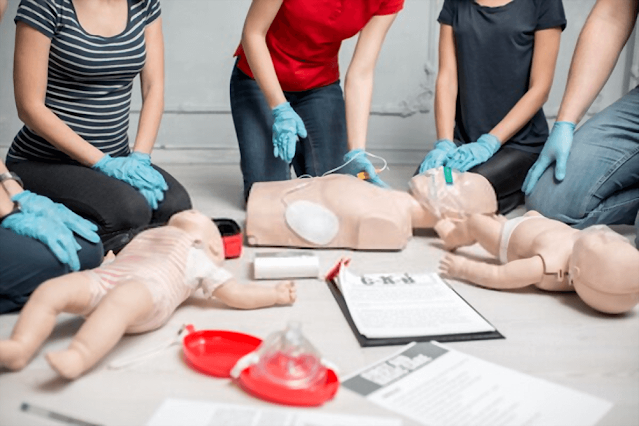Introduction
In a world where emergencies can strike unexpectedly, being equipped with first aid and CPR training can make all the difference. This comprehensive guide explores the significance of first aid and CPR training, offering essential knowledge, practical advice, and expert insights to empower individuals to act effectively in crisis situations.
Why First Aid and CPR Training Matters
Emergencies, ranging from cardiac arrests to choking incidents, require immediate intervention to prevent further harm and save lives. First aid and CPR training provide individuals with the necessary skills and confidence to respond swiftly and appropriately in such critical situations.
Understanding First Aid: A Lifesaving Skillset
First aid encompasses a range of techniques and procedures aimed at providing immediate care to those in need. From administering CPR to controlling bleeding and treating minor injuries, first aid training equips individuals with the knowledge and skills to respond effectively in diverse emergency scenarios.
The Vital Role of CPR in Saving Lives
Cardiopulmonary resuscitation (CPR) is a crucial technique used to revive individuals experiencing cardiac arrest or sudden cardiac emergencies. By performing chest compressions and rescue breaths, trained individuals can sustain blood flow and oxygenation, significantly increasing the chances of survival until professional medical help arrives.
Getting Started with First Aid and CPR Training
Embarking on the journey to becoming proficient in first aid and CPR begins with enrolling in certified training programs. These programs offer comprehensive instruction, practical demonstrations, and hands-on practice sessions to ensure participants gain confidence and competence in administering first aid and CPR techniques.
Choosing the Right Training Program
When selecting a first aid and CPR training program, it's essential to opt for reputable providers that adhere to recognized guidelines and standards. Look for courses accredited by organizations such as the American Heart Association (AHA) or the Red Cross, ensuring quality instruction and certification upon completion.
The Importance of Regular Refresher Courses
Skills acquired through first aid and CPR training are perishable, emphasizing the need for regular refresher courses. Periodic training sessions and skill reviews enable individuals to maintain proficiency and stay updated on the latest techniques and guidelines, ensuring readiness to respond effectively in emergencies.
Common FAQs About First Aid and CPR Training
How long does it take to complete first aid and CPR training?
Typically, basic first aid and CPR training courses span a few hours to a full day, depending on the program's structure and content. Advanced courses may require multiple sessions for comprehensive instruction.
Is first aid and CPR training suitable for everyone?
Yes, first aid and CPR training are valuable skills for individuals of all ages and backgrounds. From parents and caregivers to workplace employees and community members, anyone can benefit from learning how to respond confidently in emergencies.
Can online first aid and CPR courses provide adequate training?
While online courses offer convenience and flexibility, hands-on practice is crucial for mastering first aid and CPR techniques effectively. Blended learning options that combine online modules with in-person skill sessions offer the best of both worlds.
What should I expect during a first aid and CPR training session?
First aid and CPR training sessions typically include instructional presentations, practical demonstrations, and hands-on practice sessions using training manikins and simulation scenarios. Trained instructors guide participants through each step, ensuring comprehension and proficiency.
How often should I renew my first aid and CPR certification?
Certification renewal requirements vary depending on the certifying organization and jurisdiction. In general, certifications are valid for one to two years, with renewal courses focusing on skill reinforcement and updates on best practices and guidelines.
Can I perform first aid and CPR on strangers in public?
Yes, as a trained first responder, you have a legal and moral obligation to provide assistance to individuals in distress, regardless of your relationship with them. Good Samaritan laws protect individuals who offer aid in good faith, encouraging prompt and selfless action in emergency situations.
Conclusion
In emergencies, every second counts, and the ability to provide immediate assistance can mean the difference between life and death. By investing in first aid and CPR training, individuals acquire invaluable skills that empower them to respond confidently and effectively when faced with crisis situations. Whether at home, in the workplace, or out in the community, being prepared to act swiftly can truly make a lifesaving difference.

